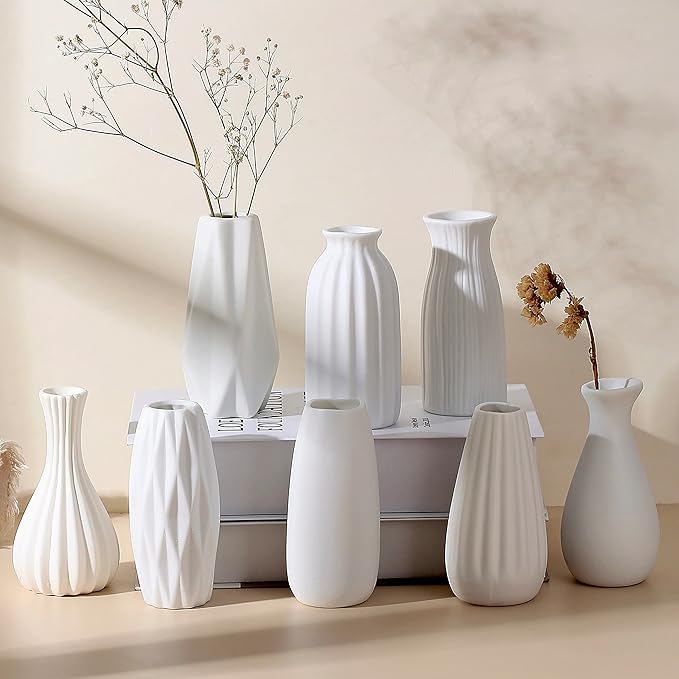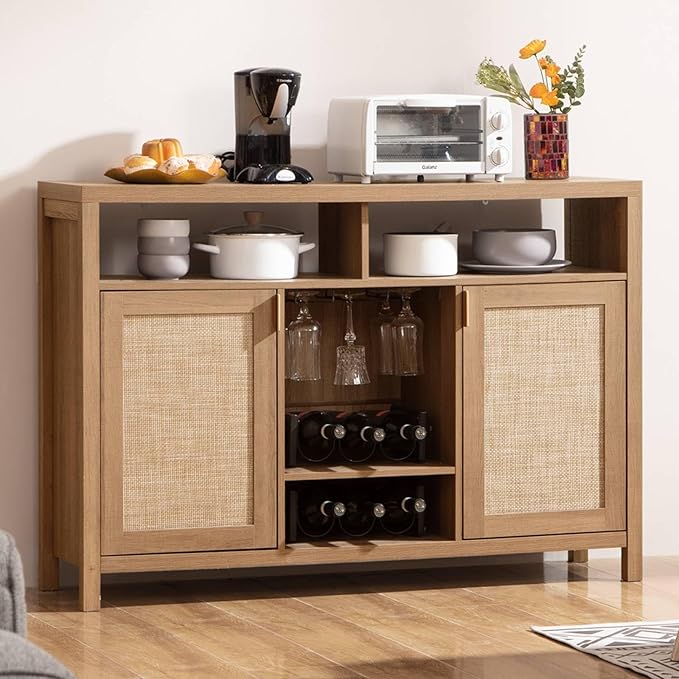Author: ShiroiYozora 19.09.2024
This site contains affiliate links to products. We may receive a commission for purchases made through these links. Learn more.
What is Japandi Style and Why is it Popular?
Contents
- 1 What is Japandi Style and Why is it Popular?
- 2 Other!
- 2.0.1 Other Interesting Things!
- 2.0.2 Blog Posts!
- 2.0.2.1 What is Japandi Style and Why is it Popular?
- 2.0.2.2 The Dark Side of Kawaii: Shocking Japan Statistics Nobody’s Talking About
- 2.0.2.3 From Bowing to Slurping: The Shocking Truth About Japanese Manners That Every Traveler Needs to Know
- 2.0.2.4 Forget Broadway, What is Kabuki and Why It’s the Next Big Thing in Entertainment
- 2.0.2.5 From Studio Ghibli to Sailor Moon: The Surprising Impact of Cats in Anime
- 2.0.2.6 From Samurai Snack to Global Phenomenon: The Surprising History of Ramen
- 2.0.2.7 The Legendary Katana: From Ancient Battlefields to Modern Screens
Picture a home that exudes tranquility and sophistication, where clean lines meet warm textures, and minimalism embraces comfort. This is the essence of Japandi style – a captivating fusion of Japanese and Scandinavian design philosophies that's taking the interior design world by storm.
But what exactly is Japandi, and why has it become the go-to aesthetic for homeowners and designers alike? Whether you're a design enthusiast or simply looking to refresh your living space, Japandi offers a unique approach that combines the best of two worlds. It's more than just a trend; it's a lifestyle that promotes harmony, functionality, and a connection to nature.
In this blog post, we'll dive deep into the world of Japandi style, exploring its origins, key principles, and why it has captured the hearts of so many. From understanding its aesthetic appeal to learning how to implement it in your own home, we'll cover everything you need to know about this elegant and timeless design approach. Let's embark on a journey to discover why Japandi might just be the perfect style to transform your living space into a serene sanctuary.


Understanding Japandi Style
A. Definition and origin of Japandi
Japandi style is a fusion of Japanese and Scandinavian design aesthetics, combining the best elements of both to create a harmonious and functional living space. This hybrid style emerged in the mid-2010s as designers and homeowners recognized the similarities between these two seemingly disparate design philosophies. Both emphasize simplicity, natural materials, and a connection to nature, making them surprisingly compatible.
The blending of Japanese and Scandinavian styles creates a unique aesthetic that balances warmth and minimalism. Japanese design contributes its emphasis on natural elements, tranquility, and imperfection, while Scandinavian design brings in light colors, functionality, and coziness. This combination results in spaces that are both serene and inviting, with a focus on quality craftsmanship and thoughtful design.
Scandinavian design is characterized by:
- Light, neutral color palettes
- Natural materials like wood and wool
- Functionality and practicality
- Clean lines and simple forms
- Abundant natural light
- Cozy textiles and furnishings (hygge concept)
D. Key elements of Japanese design
Japanese design features:
- Natural materials such as bamboo and paper
- Minimalism and clutter-free spaces
- Asymmetry and imperfection (wabi-sabi philosophy)
- Subtle, muted color schemes
- Low-profile furniture
- Zen-inspired elements for tranquility
By understanding these core elements of both styles, we can better appreciate how Japandi brings them together to create a unique and appealing aesthetic. Now that we've explored the foundations of Japandi style, let's delve into its aesthetic appeal and why it has captured the hearts of design enthusiasts worldwide.

Aesthetic Appeal of Japandi
The Japandi style captivates with its unique blend of Japanese and Scandinavian design elements, creating a harmonious and visually appealing aesthetic. This fusion style has gained popularity for its ability to create serene, functional, and beautiful living spaces.
Emphasis on functionality
Japandi design prioritizes functionality without compromising on style. Every piece of furniture and decor serves a purpose, eliminating clutter and promoting a sense of order. This emphasis on practicality creates spaces that are not only visually pleasing but also highly efficient and livable.
Balance between warmth and simplicity
One of the most striking aspects of Japandi style is its ability to achieve a perfect balance between warmth and simplicity. The clean lines and minimalist approach of Scandinavian design are softened by the organic shapes and textures found in Japanese aesthetics, resulting in spaces that feel both inviting and uncluttered.
Neutral color palettes
Japandi interiors typically feature neutral color palettes, combining the muted tones of Scandinavian design with the earthy hues of Japanese aesthetics. Soft whites, beiges, and grays are often complemented by deeper accents of charcoal or indigo, creating a calming and sophisticated atmosphere.
Focus on natural materials
Natural materials play a crucial role in Japandi design, reflecting both Japanese and Scandinavian appreciation for nature. Wood, bamboo, stone, and natural fibers like linen and cotton are commonly used, bringing an organic feel to the space and connecting the interior with the outdoors.
Minimalist approach to design
The Japandi style embraces minimalism, focusing on the concept of "less is more." This approach results in uncluttered spaces that exude tranquility and allow each carefully chosen element to shine. By combining the Scandinavian principle of "hygge" with the Japanese concept of "wabi-sabi," Japandi creates living spaces that are both cozy and elegantly imperfect.
With this understanding of Japandi's aesthetic appeal, let's explore the key principles that guide this design style.

Principles of Japandi Design
Bringing nature indoors
Japandi style embraces the connection between indoor spaces and the natural world. This principle involves incorporating organic materials, such as wood, bamboo, and stone, into your home decor. Large windows that allow ample natural light and views of outdoor greenery are also essential. To further bring nature indoors, consider adding houseplants, bonsai trees, or ikebana arrangements to create a serene, natural atmosphere.
Decluttering and organization
At the heart of Japandi design is the concept of minimalism. This principle emphasizes the importance of decluttering your space and keeping only essential items. Utilize smart storage solutions to maintain a clean, organized look. Opt for furniture with clean lines and hidden storage compartments to maximize functionality while maintaining a sleek appearance.
Hygge influence
The Danish concept of hygge, which focuses on creating a cozy and comfortable atmosphere, plays a significant role in Japandi design. Incorporate soft textures through throws, cushions, and rugs to add warmth to the minimalist space. Choose muted, earthy colors that promote relaxation and create a sense of contentment in your home.
Wabi-sabi concept
Wabi-sabi, a Japanese philosophy that finds beauty in imperfection, is another crucial principle of Japandi design. Embrace natural textures, handcrafted items, and pieces with a weathered or aged appearance. This concept encourages the appreciation of asymmetry and the subtle beauty found in simple, unrefined objects.
By incorporating these principles, you can create a harmonious Japandi-inspired space that balances minimalism with warmth, and embraces both functionality and aesthetics. Next, we'll explore practical ways to implement Japandi style in your home, from choosing the right furniture to selecting appropriate color palettes.

Implementing Japandi in Your Home
Now that we understand the principles of Japandi design, let's explore how to bring this style into your living space. Implementing Japandi is all about creating a harmonious blend of Japanese and Scandinavian elements that promote tranquility and functionality.
Incorporating natural elements
To achieve the Japandi aesthetic, start by introducing natural materials into your home. Opt for wooden furniture with clean lines and light finishes. Bamboo, rattan, or woven elements can add texture while maintaining a minimalist feel. Consider adding indoor plants like bonsai or peace lilies to bring a touch of nature indoors, enhancing the zen-inspired atmosphere.
Textiles and textures
When it comes to textiles, choose natural fibers like linen, cotton, and wool in muted, earthy tones. Layer different textures to create depth without clutter. For instance, pair a smooth linen sofa with chunky knit throws or add a sisal rug to a hardwood floor. Remember, the key is to keep it simple and cohesive.
Lighting choices for Japandi ambiance
Lighting plays a crucial role in creating the right Japandi ambiance. Opt for warm, diffused lighting that mimics natural light. Paper lanterns or pendant lights with clean, geometric shapes work well. Consider incorporating shoji screens or blinds to filter natural light and create a soft, calming atmosphere.
Furniture selection tips
When selecting furniture for your Japandi-inspired home, focus on pieces that combine functionality with minimalist design. Look for low-profile sofas, platform beds, and storage solutions that keep clutter at bay. Mix Scandinavian-style chairs with low Japanese-style tables to create an interesting fusion. Remember, less is more in Japandi design, so choose quality pieces that serve a purpose and contribute to the overall serene atmosphere.
With these elements in place, you'll be well on your way to creating a Japandi-inspired home that embodies both comfort and style. Next, we'll explore why this design style has gained such popularity in recent years.

Popularity Factors of Japandi Style
A. Sustainability focus
Japandi style has gained significant traction due to its strong emphasis on sustainability. This design philosophy aligns perfectly with the growing global consciousness about environmental issues. Japandi incorporates natural, eco-friendly materials like wood, bamboo, and organic fabrics, appealing to those who want to reduce their carbon footprint. The focus on quality over quantity also promotes longevity in furniture and decor choices, reducing waste and supporting sustainable consumption habits.
B. Timeless and versatile design
The timeless appeal of Japandi style is another key factor in its popularity. By blending the clean lines of Scandinavian design with the organic forms of Japanese aesthetics, Japandi creates a look that transcends fleeting trends. This versatility allows it to adapt to various architectural styles and personal preferences, making it a safe and long-lasting investment for homeowners.
C. Stress-reducing environment
In today's fast-paced world, the calming influence of Japandi interiors has become increasingly attractive. The style's emphasis on clutter-free spaces, natural elements, and soft, muted color palettes creates a serene atmosphere that helps reduce stress and promote relaxation. This aspect of Japandi resonates strongly with those seeking a peaceful retreat from the chaos of modern life.
D. Appeal to minimalist lifestyles
Japandi's minimalist approach aligns perfectly with the growing trend towards simpler, more intentional living. By encouraging a "less is more" mentality, this style supports decluttering and mindful consumption. The focus on functional beauty and purposeful design appeals to those looking to streamline their lives and create spaces that are both aesthetically pleasing and practical.
As we explore these popularity factors, it becomes clear why Japandi has captured the hearts of design enthusiasts worldwide. Next, we'll examine how Japandi compares to other interior design styles, further highlighting its unique qualities and appeal.
Japandi vs Other Interior Design Styles
How Japandi stands out from other minimalist styles
Japandi style distinguishes itself from other minimalist approaches through its unique fusion of Japanese and Scandinavian design principles. Unlike pure minimalism, Japandi embraces warmth and organic elements, creating a cozy yet uncluttered atmosphere. It incorporates natural materials, soft textures, and a muted color palette, setting it apart from the stark, sometimes cold feel of traditional minimalist interiors.
Differences from traditional Japanese interiors
While Japandi draws inspiration from Japanese aesthetics, it diverges from traditional Japanese interiors in several ways. Traditional Japanese design often features tatami mats, shoji screens, and low furniture, whereas Japandi incorporates more diverse furniture styles and materials. Japandi also allows for more color variation, albeit still within a restrained palette, compared to the more monochromatic traditional Japanese interiors.
Japandi shares many similarities with Scandinavian design, but it introduces distinct Japanese elements that create a unique blend. While both styles prioritize functionality and simplicity, Japandi incorporates more organic shapes and textures inspired by Japanese wabi-sabi philosophy. This results in a slightly warmer, more lived-in feel compared to the sometimes cooler, more streamlined pure Scandinavian interiors.
Now that we've explored how Japandi compares to other styles, let's delve into the factors contributing to its growing popularity in modern interior design.
Conclusion:
Japandi style offers a unique blend of Japanese minimalism and Scandinavian functionality, creating a harmonious and inviting living space. By embracing simplicity, natural materials, and a muted color palette, this design approach brings tranquility and warmth to any home. The principles of Japandi, such as decluttering, incorporating natural elements, and focusing on quality over quantity, not only enhance the aesthetic appeal but also promote a more mindful and sustainable lifestyle.
As the popularity of Japandi continues to grow, it's clear that this design style resonates with those seeking balance and serenity in their living environments. Whether you're looking to completely transform your space or simply incorporate a few Japandi-inspired elements, this versatile style offers a timeless and sophisticated solution for modern homes. Embrace the beauty of Japandi and create a space that nurtures both your body and soul.

Go back button!





























